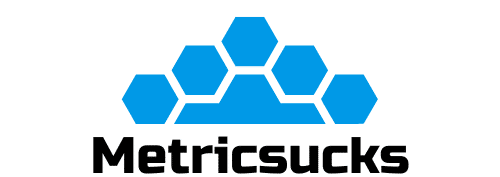What Advances Are Being Made in Acoustic Metamaterials for Noise Canceling Applications?

Acoustic metamaterials are rapidly emerging as a game-changer in the world of sound manipulation. A fascinating multidisciplinary field that combines physics, materials science, and engineering, acoustic metamaterials are purpose-built materials with unique properties that can control, direct, and manipulate sound in ways previously unimaginable.
They are specifically engineered to control acoustic waves, making them highly relevant for a range of applications from noise canceling to energy harvesting and medical imaging. This article will explore the potential of these materials and the latest advancements within the field.
A découvrir également : How Are Smart Contracts Using Blockchain Being Applied in Real Estate Transactions?
Harnessing the Power of Acoustic Metamaterials
Acoustic metamaterials are not a new phenomenon. However, recent advancements have opened a new window into their potential applications, with noise canceling emerging as one of the most promising fields.
At a fundamental level, these metamaterials work by manipulating sound waves, exploiting their properties to absorb, reflect, or refract them. The unique structures of these materials allow them to control sound at the source, rather than simply blocking or absorbing it like traditional noise-reducing materials. This means they can effectively reduce noise levels without the need for bulky barriers or insulation.
Avez-vous vu cela : Uncover hidden treasures in your american mystery box
One approach to achieving this involves creating metasurfaces, a type of metamaterial that manipulates sound waves at the surface level. These surfaces can be engineered to reflect sound waves in certain directions, effectively steering them away from specific areas. A study published in Physical Review Letters presented a metasurface that could twist sound waves, sending them in a spiral path, and thus reducing the noise impact in certain areas.
The Potential of Open Window Acoustic Metamaterials
One of the most impressive and practical applications of acoustic metamaterials is in the creation of ‘open window’ systems. These structures utilize specially designed materials to cancel out noise, effectively allowing a window to remain open without letting in unwanted sound.
Singapore’s Nanyang Technological University has developed such a system, which uses a speaker to emit a negative wave of the incoming noise, effectively cancelling it out. The system is compact, and can be easily fitted to existing windows.
This innovative application of acoustic metamaterials could revolutionize urban living, reducing noise pollution without the need for sealed windows and air conditioning. This has significant implications for energy consumption and quality of life in high-density urban areas, as noted by a study in Energy and Buildings.
Acoustic Metamaterials in Noise Absorption Applications
Absorption is another key area where acoustic metamaterials are making a significant impact. Traditional noise absorption materials, while effective, often need to be thick and bulky to absorb a wide range of frequencies. Acoustic metamaterials, however, can be designed with specific structures that allow them to absorb sound across a broad frequency spectrum, while remaining compact and lightweight.
A paper published in Applied Physics Letters described an acoustic metamaterial that achieved near-perfect absorption across a wide range of frequencies. The structure of the metamaterial was based on an array of unit cells, each designed to trap a specific frequency of sound. This allows for efficient absorption of sound energy, effectively reducing noise levels.
Manipulating Sound with Metamaterials: The Role of Frequency and Energy
Frequency and energy are integral to the functioning of acoustic metamaterials. By controlling these aspects, researchers can manipulate the way sound interacts with the material, enabling them to direct, absorb, or reflect it.
By designing structures on a scale similar to the wavelength of the sound they wish to manipulate, researchers can control the acoustic field within the material. This can allow them to generate negative refractive indices, meaning that sound waves can be bent in ways not possible with natural materials.
The concept of negative refraction was first proposed by scholar John Pendry in 2000 and has since opened the door to a host of potential applications, from superlenses capable of imaging below the diffraction limit, to acoustic cloaking devices.
Acoustic Metamaterials: The Road Ahead
The potential of acoustic metamaterials is vast and varied. With ongoing research and advancements, we are likely to see more innovative applications of these materials in the future.
These include the development of acoustic cloaking devices that can hide objects from sound waves, much like a visual invisibility cloak. Acoustic metamaterials could also play a key role in energy harvesting, converting sound energy into electricity. There are also potential applications in the medical field, with the possibility of using sound waves to visualize and treat diseases in non-invasive ways.
Google Scholar’s citation counts for acoustic metamaterials have increased exponentially in recent years, reflecting their growing relevance and the interest of the scientific community in these materials. As academic and industry research progresses, we can expect to see more and more practical applications of these fascinating materials in our everyday lives.
Advancements in Phononic Crystals and Band Gaps
The exciting world of acoustic metamaterials is not just limited to noise cancellation. These materials are also playing a crucial role in the development of phononic crystals. These are structured materials that can control and manipulate mechanical vibrations, including sound and heat.
At the heart of phononic crystals lies the concept of a band gap, a range of frequencies at which waves cannot propagate through the crystal. By engineering the size, shape, and arrangement of the unit cells within the crystal, researchers can control these band gaps. This allows them to dictate which frequencies can pass through the crystal and which cannot.
A study published in Physical Review Letters (Phys Rev Lett) focused on manipulating these band gaps to control low frequency acoustic waves. The research demonstrated how intentionally designed defects within the unit cell structure could localize and store sound energy, effectively creating an ‘acoustic cavity’. This has significant implications for controlling sound in various applications, from telecommunications to energy harvesting.
The band gap and unit cells in phononic crystals effectively create a ‘frequency filter’ for sound. This can be tuned to allow certain frequencies through while blocking others, offering a novel approach to noise control and sound manipulation. This demonstrates the versatility and immense potential of acoustic metamaterials in various applications.
The Future of Acoustic Metamaterials: Google Scholar Insights
According to data from Google Scholar, the interest in acoustic metamaterials has been on a steady rise for the past few years. The citation counts for papers related to this field have increased exponentially, indicating the growing significance of these materials in academic and industrial research.
Innovations in areas such as metasurfaces, phononic crystals, and open window systems are propelling the field forward. From noise control to energy harvesting, the potential applications of these materials are vast and varied.
As we look ahead, the future of acoustic metamaterials seems incredibly promising. As researchers continue to unravel the secrets of these materials, and as manufacturing techniques continue to advance, it is likely that we will see an uptake in the practical applications of acoustic metamaterials.
Whether it’s in the form of an open window system that cancels out noise pollution, or a phononic crystal that can manipulate heat and sound, the impact of acoustic metamaterials on our lives will be profound.
In conclusion, the advancements made in acoustic metamaterials for noise canceling applications and beyond are groundbreaking. As we continue to understand and harness the unique properties of these materials, we are opening doors to a quieter, more energy-efficient, and technologically advanced future. The rapid rise in citation counts from Google Scholar reflects the global scientific community’s recognition of this untapped potential. While still in its nascent stage, the future of acoustic metamaterials looks incredibly promising.
